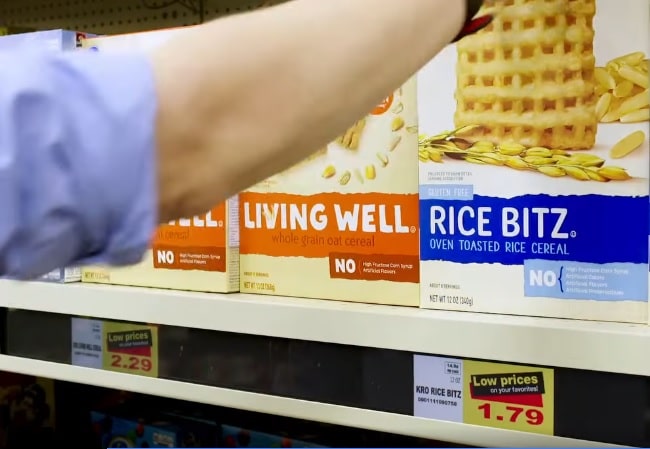
Is it a time- and labor-saving device that makes sense in our modern, digital age – or is it something more nefarious that will end up costing you more at the grocery store?
That’s what two U.S. Senators want to find out, about digital price tags at the country’s largest traditional grocery retailer.
Democratic Senators Elizabeth Warren of Massachusetts and Bob Casey of Pennsylvania have sent a letter to Kroger’s CEO, asking questions and raising concerns that the chain could be using digital price tags as a way to change how much they charge their customers for a given product whenever they’d like.
“These digital price tags may enable Kroger and other grocery chains to transition to ‘dynamic pricing,’ in which the price of basic household goods could surge based on the time of day, the weather, or other transitory events,” the letter reads, “allowing stores to calibrate price increases to extract maximum profits at a time when the amount of Americans’ income spent on food is at a 30-year high.”
Kroger began testing digital shelf tags back in 2018, replacing paper price tags that had to be printed, installed, removed and replaced every time there was a sale or a price change. It expanded to more stores, as Kroger said the technology not only freed up employees to perform other tasks, but opened up new possibilities, including the potential for the digital displays to communicate with shoppers’ smartphones and offer them personalized deals, or help them check items off their shopping lists.
So why the Congressional concern now, all of a sudden? A confluence of recent events brought worries about grocery “surge pricing” into the public consciousness. It started back in February, when the CEO of the fast-food chain Wendy’s casually mentioned the rollout of new digital menu boards that he said would enable “more enhanced features like dynamic pricing.” After some bad press and a public outcry about the potential for your next Dave’s Single to go up in price when demand was high during busy times of day, the boss had to walk back his comments and insist that he didn’t mean Wendy’s planned to implement “surge pricing,” but might instead “offer discounts and value offers to our customers more easily, particularly in the slower times of day.”
That did little to ease concerns by the time, a few months later, Walmart cheerfully announced that, like Kroger, it also planned to roll out digital shelf labels to thousands of its stores within the next two years. In addition to easing employees’ workload, Walmart promised the new digital labels would “enhance the customer experience.”
But, burned by what they had heard from Wendy’s, many shoppers were suspicious. The system “is not designed for dynamic pricing,” a Walmart spokesperson insisted. But many shoppers remain unconvinced.
And so, apparently, are a couple of U.S. Senators.
“Widespread adoption of digital price tags appears poised to enable large grocery stores to squeeze consumers to increase profits,” their letter goes on. “Employees can change the prices of goods with the mere click of a button, updating the digital price tag within seconds.” They raise the prospect of ice cream prices being jacked up on a hot day, or turkeys creeping up in price the closer it gets to Thanksgiving, which they say would cause shoppers “to face unexpected price hikes when they reach the grocery aisle and find themselves unable to afford the groceries that they had originally budgeted for.”
While the letter merely requests information to help the Senators “better understand the justification for and risks of electronic shelving,” Senator Warren didn’t hold back in a post on X, outright accusing Kroger of cheating consumers. “Kroger is trying to pull a fast one on us by using digital price tags – a move that could let them use surge pricing for water or ice cream when it’s hot out,” she wrote. “Corporate greed is out of control… enough is enough.”
What’s unclear is whether the lawmakers are being responsive to genuine consumer concerns, or whether they merely spotted a hot-button topic and jumped aboard to help burnish their consumer-advocate credentials. Warren has already publicly called on both the Federal Trade Commission and the President to help lower grocery prices, and she’s co-sponsored legislation to outlaw shrinkflation by declaring it to be “unfair or deceptive.” None of those efforts has yet produced results. But they have produced headlines.
So, motives aside, if you’re concerned about digital technology and unfair pricing, know that there are members of Congress who say they’re fighting for you. With retailers insisting that the entire argument is much ado about nothing, it could turn out to be a fight without an enemy. But if someday these Senators’ worst-case pricing predictions come true – you can’t say they didn’t warn you.
Image source: Kroger Technology










